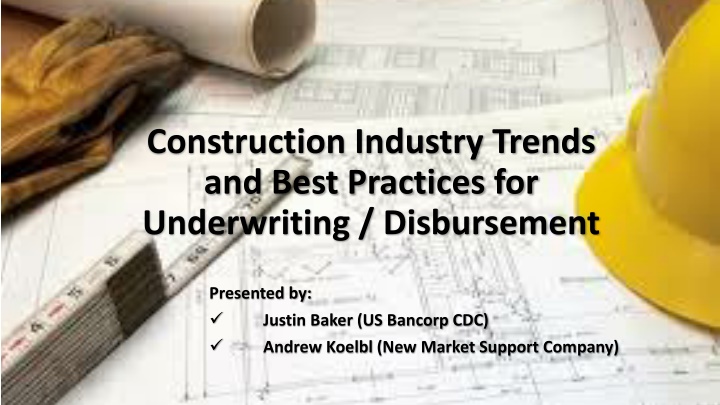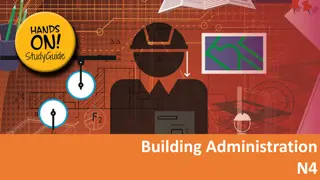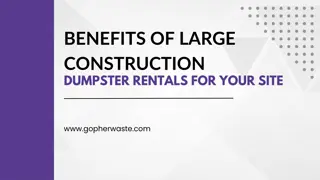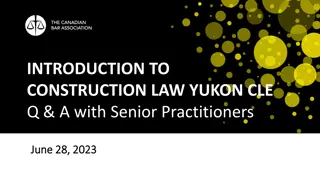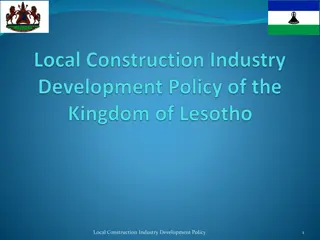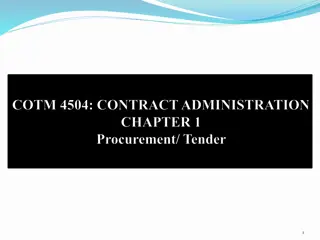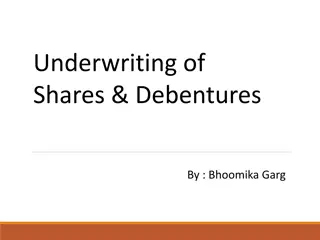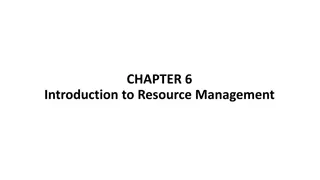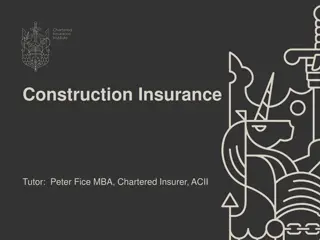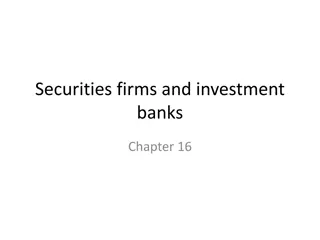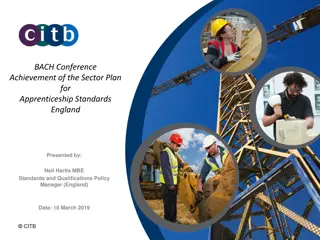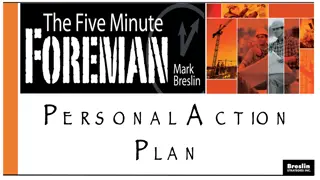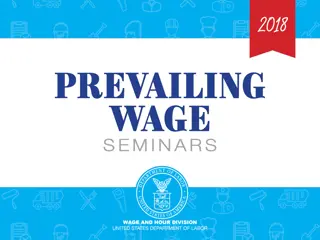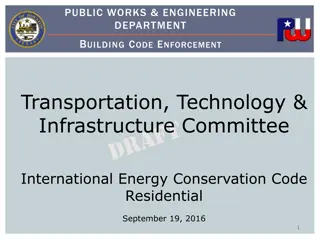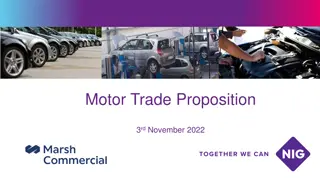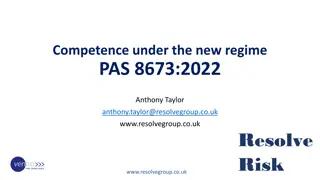Construction Industry Trends and Best Practices for Underwriting
The latest trends in the construction industry, including booming markets, material costs, labor shortages, and the impact of tariffs on lumber prices. Learn best practices for underwriting and disbursement in construction projects, as presented by industry experts from US Bancorp CDC and New Market Support Company. Dive into pre-closing and post-closing practices, typical draw package requirements, and how to address potential risks and defaults
Download Presentation

Please find below an Image/Link to download the presentation.
The content on the website is provided AS IS for your information and personal use only. It may not be sold, licensed, or shared on other websites without obtaining consent from the author.If you encounter any issues during the download, it is possible that the publisher has removed the file from their server.
You are allowed to download the files provided on this website for personal or commercial use, subject to the condition that they are used lawfully. All files are the property of their respective owners.
The content on the website is provided AS IS for your information and personal use only. It may not be sold, licensed, or shared on other websites without obtaining consent from the author.
E N D
Presentation Transcript
Construction Industry Trends and Best Practices for Underwriting / Disbursement Presented by: Justin Baker (US Bancorp CDC) Andrew Koelbl (New Market Support Company)
PLAN for todays CCML Roundtable: Construction Industry Trends (Justin Baker) Pre-Closing Best Practices (Andrew Koelbl) Post-Closing Best Practices (Justin & Andy) Typical Construction Draw Package Requirements Potential Risks / Defaults and How to Address
Construction Industry Trends: Booming Markets Lots of work! What markets have the most construction activity? Material, Equipment, and Labor Costs: What sort of trends exist related to construction costs? Is it true that lumber prices are expected to increase? Labor Shortages: Why do Labor Shortages exist? How may this impact a project? Other Industry Trends: i.e. Minority Participation, Union Strength, etc.
Booming Markets Lots of work! What markets have the most construction activity? There is lots of work taking place all over the country! Cities (a few examples) i.e. San Francisco, Nashville, Austin, Denver, Minneapolis States (a few examples) i.e. New York, California, Texas, Florida, Colorado, Minnesota Urban vs. Suburban Nationally, construction in urban areas has outpaced suburbs
Material, Equipment, & Labor Costs: Construction Costs (general) Construction costs have increased gradually in recent years. Materials Material costs seem to be ticking up slowly (i.e. 2%) per year. Equipment Growth rate has been slow (i.e. 1%) and is expected to remain flat. Labor Costs Labor expenses have increased at a higher rate (i.e. 3-4%) per year.
Whats going on with Lumber prices? Tariffs on Canadian Lumber: Trump administration recently announced plans to impose tariffs of between 3% and 24% on most Canadian lumber. Why is the U.S. imposing these tariffs? The U.S. Commerce Department recently determined that Canada had been improperly subsidizing the sale of softwood lumber products to the United States. What type of impact will this have on construction costs? Canadian lumber makes up approximately 30% of the U.S. market. A study last year conducted by the National Association of Home Builders found that a 15% tariff would increase new home prices by 4.2% and cost 4,666 full time jobs.
Impact of Labor Shortages: Why do Labor Shortages exist? The recession impacted the construction industry more than others. Many skilled workers/craftsman left the industry to find stable work. In recent years, there has been a lack of vocational education. Due to tight immigration policies, there are fewer international workers. What types of trades are experiencing labor shortages? Skilled Trades (i.e. Mechanical, Electrical, Plumbing) How do Labor Shortages impact construction activity? Cost overruns Labor costs have been increasing at a faster rate. Construction delays Subcontractors are more likely to fall behind schedule and/or leave the jobsite for higher paying work elsewhere.
OTHER Industry Trends: Minority Participation: There is both a necessity and a strong desire to increase participation from minority and/or women owned businesses. Union Strength (varies State-by-State): In general, Union membership has declined in recent years. Strong Unions: i.e. New York, Alaska, Hawaii, California, Illinois Weaker Unions: i.e. North Carolina, South Carolina, Utah Concern re: industry downturn in the next 18 months? Some industry professionals are cautiously optimistic while others believe that we will see another market downturn in the near future.
Pre-Closing Best Practices: Budget Review Identify which line items are estimates (moving targets) and which are under contract Require Plan and Cost Review from third party inspector and compare to budget Make sure legal costs estimates are being monitored as closing approaches to identify potential cost overruns Require both a soft cost and hard cost contingency. The amount varies per deal and risk Risk Factors affecting contingency include GC strength, Owners Rep/Construction Consultant, Third Party Inspector, Type of General Contract, FF&E, etc .
Pre-Closing Best Practices: (cont.) General Contractor Due Diligence Financial Analysis of the GC Payment and Performance Bond Look into other projects GC has performed Identify Type of contract (GMP, Cost Plus, etc ) Stored material provisions and proof of insurance requirements Timing of Permits Change Order Threshold s- what amounts require an approval from lenders
Pre-Closing Best Practices: (cont.) Closing Draw Review Suggested to identify a cut-off date so review is not put together through piece mail Sources and Uses- get the borrower used to forms to be used post-closing Soft Cost reconciliation spreadsheet Try to ensure the closing draw correlates with the financial model Pre-Closing Discussion Set up a call with CDE s, Disbursement Agent, and the borrower contact who will be responsible for submitting draw requests post-close Make sure Borrower is familiar with approval periods, draw documentation, funding process
What are the typical Construction Draw Package Requirements? Cover Letter (preferred but not required) Draw Payment Application (AIA G702) Continuation Sheet / Schedule of Values (AIA G703) Sources and Uses (showing budget in balance) Conditional Lien Waivers (current draw) Unconditional Lien Waivers (previous draw) Payee Lists & Backup for Hard and Soft Costs Construction Schedule (Updated)
What are the typical Construction Draw Package Requirements? (cont.) Change Order Log (including Potential and Pending COs) Title Update / Date Down Endorsement Proof of Insurance on Stored Materials Foundation Survey and/or Foundation Endorsement Explanation for Contingency Usage Explanation for Budget Reallocations Construction Inspection Report OTHER (i.e. Notice To Proceed, Permits)
What are some potential risks/defaults and how should these be addressed? Construction Delays- Once a delay is identified, ensure the construction interest line item is adjusted accordingly Identify any risks associated with delays (ex. if there are any penalties for handing over the space to a tenant for TI build out) Cost Overruns- If contingency is not sufficient require borrower to deposit the shortfall in the budget immediately- do not wait for funds to run out. Be careful of cost allocation reduction in line items to fund other line items that are over budget. Communicate with borrower about future change orders and if lender approval is required
Potential risks/defaults and how should these be addressed? (cont.) Liens-If liens are identified there are different options available Check with disbursement agreement for guidance Get communication from GC if lien was filed by a sub-contractor to understand the issue Require the sub-contractor sign a conditional lien waiver before disbursing. Short the draw funding by 150% of the lien amount Hold off on funding until lien is cleared and provided proof of documentation (depending on lien amount)
